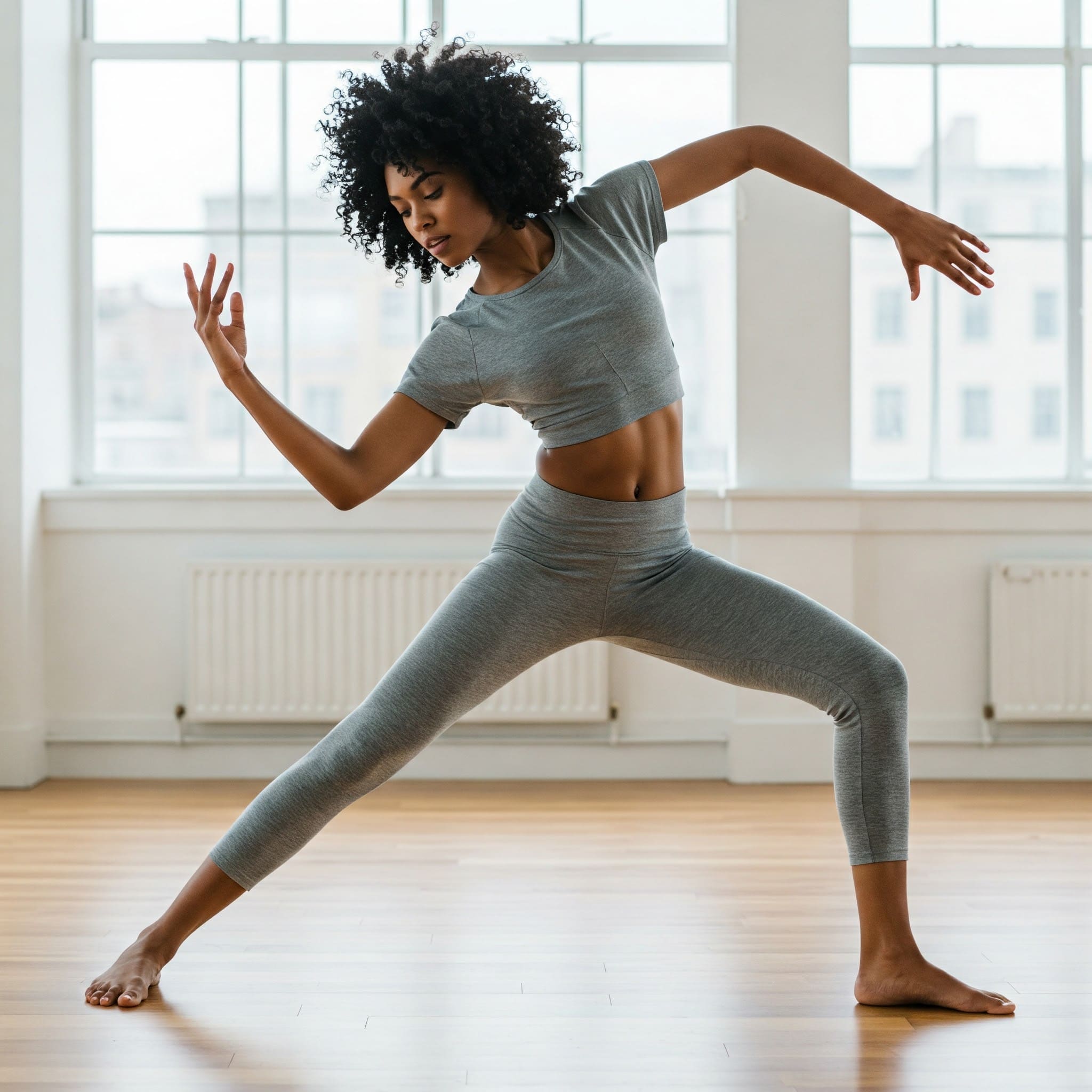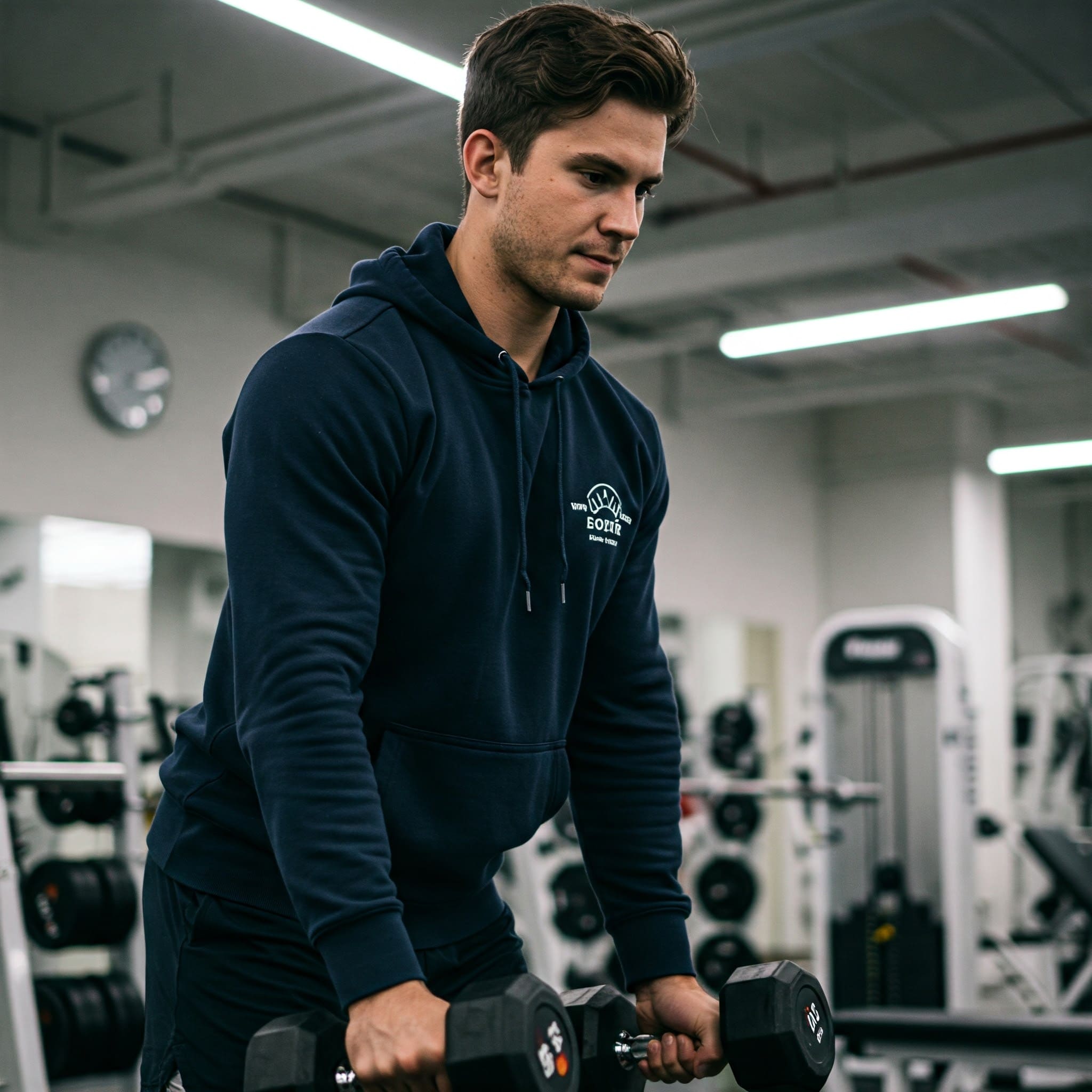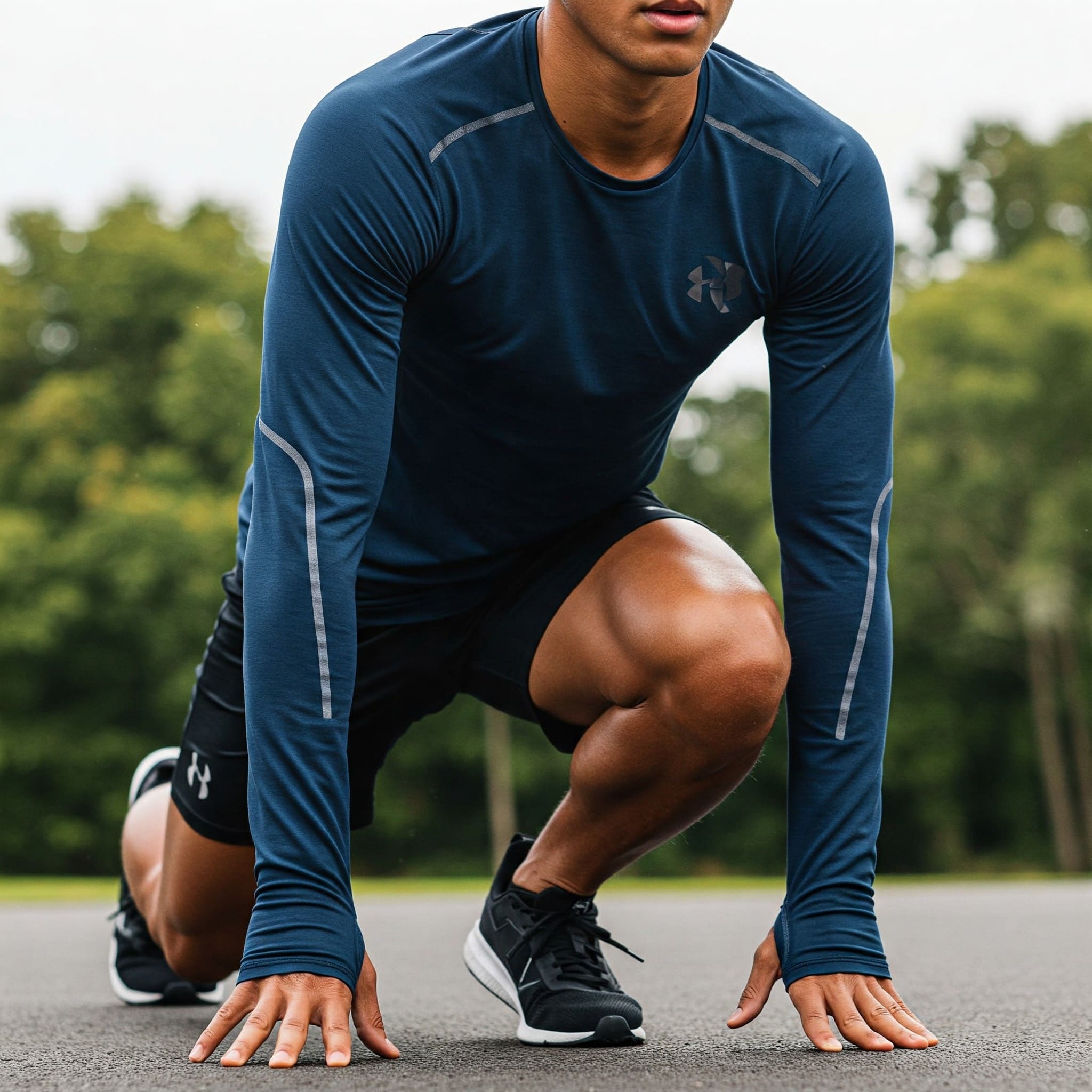Are you tired of feeling uncomfortable during your workouts? The right athletic wear can make the difference between an energizing session and a frustrating experience.
The best workout clothes combine moisture-wicking fabrics1, proper fit, and appropriate coverage for your specific activity. For cardio, choose lightweight, breathable options; for strength training, select more supportive, flexible garments.

When it comes to workout clothes, the options can seem endless. But finding the perfect combination of comfort, functionality, and style doesn’t have to be complicated. Let’s explore what makes certain clothing ideal for different types of exercise.
Table of Contents
- Why do girls wear tight clothes when working out?
- Why do people wear hoodies in the gym?
- Why do people wear long sleeves to the gym?
- Conclusion
Why do girls wear tight clothes when working out?
Have you noticed how popular form-fitting clothes are in women’s fitness wear? The reasons behind this trend go beyond just aesthetics and fashion statements.
Women often choose tight-fitting clothes during workouts because they provide better range of motion, reduce chafing, allow coaches to observe form, and stay in place during intense movements. Compression benefits also improve circulation and muscle support.

Function Over Fashion: The Practical Benefits
When it comes to workout efficiency, tight-fitting clothes offer several advantages:
Movement Monitoring
In my experience manufacturing athletic wear, tight clothing helps both the wearer and trainers better observe body positioning and form. This is especially important for exercises where proper alignment is crucial, like yoga or weightlifting.
Freedom of Movement
Loose fabric can catch on equipment or get in the way during complex movements. Form-fitting options eliminate this problem, allowing for a full range of motion without restriction.
Stay-Put Factor
There’s nothing more distracting than constantly adjusting your clothes during a workout. Tight-fitting garments stay in place, letting you focus entirely on your exercise routine.
The Science Behind Compression
Many tight workout clothes also offer compression benefits:
| Compression Benefit | How It Helps |
|---|---|
| Improved Blood Flow | Helps deliver oxygen to working muscles more efficiently |
| Reduced Muscle Fatigue | May help decrease lactic acid buildup |
| Enhanced Recovery | Can reduce post-workout soreness and inflammation |
| Muscle Stabilization | Provides support to muscles during movement |
I’ve seen firsthand through our manufacturing process how the right compression level can make a significant difference in athletic performance. When we design women’s leggings, we carefully consider the compression ratio to ensure it provides benefits without restricting movement.
Material Matters
The effectiveness of tight workout clothes also depends on their materials:
- Moisture-wicking fabrics: Essential for keeping skin dry by pulling sweat away from the body
- Four-way stretch: Allows movement in all directions without losing shape
- Breathable panels: Strategic mesh sections can improve airflow while maintaining compression
- Anti-microbial treatments: Help prevent odor-causing bacteria, especially important in tight-fitting clothes
In our factory, we test multiple fabric combinations to find the perfect balance between compression, breathability, and comfort. It’s this attention to detail that makes quality athletic wear worth the investment.
Why do people wear hoodies in the gym?
Ever wondered why some gym-goers bundle up in hoodies despite the intense workout ahead? This seemingly counterintuitive choice actually serves several strategic purposes.
Hoodies in the gym help increase body temperature and sweating, create a focused workout environment by limiting distractions, provide psychological comfort, and can be part of progressive warm-up routines before intense training.

The Thermal Training Advantage
The primary reason many athletes, especially those in strength and conditioning, wear hoodies is for their thermal effects. I’ve discussed this with professional trainers who’ve provided fascinating insights:
Increased Metabolic Rate
When your body works harder to cool itself, you burn more calories. Wearing a hoodie creates a mild form of heat stress that can potentially boost your metabolic rate during a workout.
Enhanced Warm-Up
Proper warm-up is essential for performance and injury prevention. A hoodie helps raise your core temperature more quickly and maintain that warmth between exercises or sets.
Increased Sweat Production
While sweating more doesn’t necessarily mean a better workout, it can help with temporary water weight reduction, which is why combat athletes often train in hoodies before weigh-ins.
Psychological Benefits
The advantages of gym hoodies extend beyond the physical:
| Psychological Factor | Benefit |
|---|---|
| Personal Space | Creates a sense of privacy in crowded gyms |
| Focus Enhancement | Limiting peripheral vision helps concentrate on the workout |
| Confidence Booster | Conceals areas of insecurity for those early in their fitness journey |
| Mindset Shift | Putting on a "workout uniform" can trigger performance psychology |
I remember working with a fitness influencer who described his hoodie as his "workout armor." When he puts it on, it signals to his brain that it’s time to work hard. This psychological trigger shouldn’t be underestimated.
Practical Considerations
From a manufacturing perspective, we’ve noticed increasing demand for performance hoodies with specific features:
- Strategic breathability: Panels that allow heat to escape from critical areas
- Moisture management: Internal fabrics that wick sweat while external layers provide warmth
- Antimicrobial treatments: Especially important for garments worn during heavy sweating
- Thumb holes: Keep sleeves in place and provide wrist support during lifting
We’ve also seen a trend toward lightweight, technical hoodies that provide warmth without excessive bulk, giving athletes the thermal benefits without restricting movement.
Why do people wear long sleeves to the gym?
Have you noticed more people working out in long sleeves, even when it’s not particularly cold? This growing trend combines practical benefits with personal preferences.
Long sleeves in the gym provide temperature regulation2, skin protection, added hygiene when using shared equipment, muscle warming benefits, and can increase proprioception for better movement awareness during exercises.

Protection and Hygiene
Long sleeves serve several protective functions during workouts:
Skin Barrier
In my years working with athletic wear, I’ve learned that long sleeves create an important barrier between your skin and gym equipment. This is especially valuable considering how many people use the same machines throughout the day.
Reduced Friction
When performing exercises like barbell rows or deadlifts where the bar moves against your body, long sleeves can prevent uncomfortable friction and skin irritation.
Temperature Regulation
Modern performance long sleeves aren’t just for warmth. Many feature temperature-regulating properties that help maintain optimal body temperature regardless of changing conditions during your workout.
Enhanced Performance Features
Today’s technical long sleeves offer performance advantages:
| Feature | Benefit |
|---|---|
| Compression | Improved blood flow and muscle support |
| UV Protection | Essential for outdoor training sessions |
| Moisture Management | Wicks sweat away from the body |
| Antimicrobial Properties | Reduces odor-causing bacteria |
| Thermal Mapping | Different fabric weights in strategic areas |
The Proprioception Effect
One of the most interesting benefits of long sleeves that I’ve learned about through our research and development process is enhanced proprioception – your body’s awareness of its position in space.
The gentle pressure and skin contact from well-fitted long sleeves can increase sensory feedback during movements. This is particularly beneficial during complex exercises where precise form is crucial.
For athletes recovering from injuries, this heightened body awareness can also aid in safer training and rehabilitation. When we developed our recovery line of long-sleeve compression wear, physical therapists advised us on optimal pressure gradients to enhance this effect.
Psychological Comfort
Beyond physical benefits, long sleeves provide psychological advantages:
- Confidence: For those self-conscious about certain body areas
- Mental preparation: Part of a pre-workout ritual that signals readiness
- Focus enhancement: Minimizing distractions from environmental changes
- Consistency: Creating reliable sensory feedback regardless of gym temperature
When designing our performance long sleeves, we conduct extensive user testing to ensure they provide both physical and psychological benefits that enhance the overall workout experience.
Conclusion
The best workout clothes combine functionality, comfort, and personal preference. Whether you choose tight-fitting garments for movement freedom, hoodies for focus, or long sleeves for protection, select clothing that supports your specific fitness goals and makes you feel confident.
FAQ
Q1: What are the best workout clothes for cardio?
A1: The best clothes for cardio are lightweight and breathable, often made from moisture-wicking fabrics like polyester or nylon that keep you dry and comfortable throughout your workout.
Q2: Why do people wear tight clothes when working out?
A2: Tight clothes provide better range of motion, reduce chafing, help observe form, stay in place during intense exercises, and offer compression benefits that improve circulation and muscle support.
Q3: Why do people wear hoodies in the gym?
A3: Hoodies help increase body temperature, boost metabolic rate, enhance warm-up, and increase sweat production. They also create a focused environment and offer psychological comfort during workouts.
Q4: Why do people wear long sleeves to the gym?
A4: Long sleeves provide skin protection, reduce friction, and help regulate body temperature. They also offer performance benefits such as improved blood flow and muscle support.
Q5: What is the benefit of wearing compression clothes during a workout?
A5: Compression clothes improve blood flow, reduce muscle fatigue, enhance recovery, and provide muscle stabilization during movement, which can enhance overall workout performance.
Q6: Are hoodies good for weight loss?
A6: Wearing a hoodie can increase your body’s temperature, causing you to sweat more, which may lead to temporary weight loss through water loss. However, it’s not a substitute for actual fat burning.
Q7: What types of fabrics are best for workout clothes?
A7: The best fabrics for workout clothes include moisture-wicking materials like polyester, nylon, and spandex, which help keep you dry and allow for better flexibility and movement.
Q8: Do long sleeves help with muscle recovery?
A8: Yes, long sleeves with compression can enhance muscle recovery by improving blood flow and providing support, making them ideal for post-workout or injury rehabilitation.


